
views
Using the Digging Method

Choose the right time of year to dig up large shrubs. It’s best to clear large garden shrubs at a time when birds aren't nesting, to avoid disturbing wildlife. Aim to clear larger shrubs during the fall or winter to avoid this. It’s usually easier to dig when the soil is fairly dry, so you should also avoid digging after heavy rainfall.
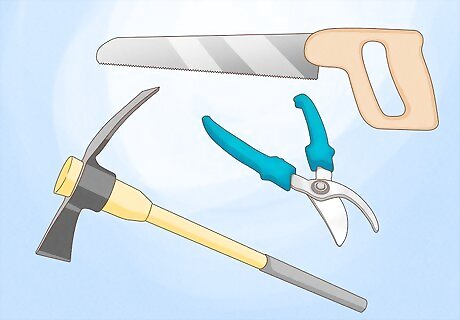
Gather the necessary tools and materials. A sharp pair of pruning shears and a small saw will make the job of clearing the shrub a lot easier – remember sharp blades are safer than blunt ones. A round-bladed spade with a pointed tip will make it easier to dig through the soil, and a mattock will be useful for cutting through the roots. Also remember to wear appropriate clothing – including sturdy gardening gloves and strong boots.
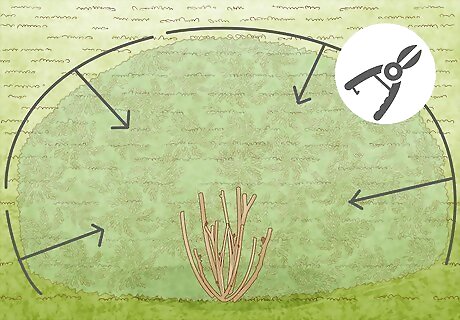
Cut the shrub back to expose the stump. Use the pruning shears to cut the shrub right back until only a small amount of stump is remaining. This will make it much easier for you to expose the root ball and pull it out of the ground, which is necessary for completely clearing the shrub. Leaving the shrub's roots in the ground will simply allow the shrub to grow back.

Dig a trench around the stump to expose the root ball. Use the round-bladed spade to dig a trench around the stump. Beware of digging close to water or electricity supplies. Consider calling 811 (the national "call before you dig" service) to find out if any utility lines run beneath that part of your garden.

Pull out the root ball. Using the spade and mattock, cut through the roots as much as possible to make it easier to pull the root mass out of the ground. Although it's only necessary to remove the root head and main roots to prevent the shrub from re-growing, you should also remove as much of the rest of the root mass as you can to make space for subsequent planting. Shaking the soil out of the roots will make the plant lighter to handle.

Dispose of the pulled-up shrub. Once you have cut away the shrub and pulled up the root mass, you can dispose of the plant material anyway you like. If the shrub is small enough, you could try to compost it, otherwise you should consider burning it. Don’t compost any diseased plant matter you cut away – burn it or put it in the household trash to prevent infection spreading to other plants.

Break up any remaining root and add some compost. Once you have disposed of the root ball, use a mattock or spade to break up as much of the remaining root in the ground as you can – breaking the root up will help it to rot away naturally in the soil. It’s also a good idea to incorporate some well-rotted manure or compost into the soil now to benefit the next plant that will go in the ground here.
Using Alternative Methods
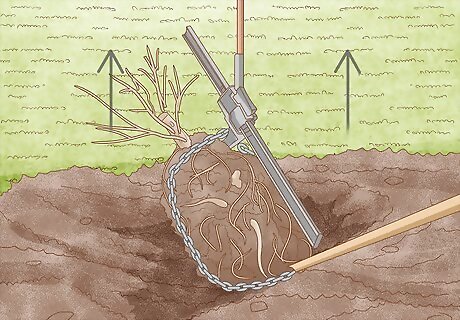
Pull the shrub out of the ground using a chain. Another approach that involves less digging is to wrap a length of chain around the root stump and pull it from the ground using a car jack or a towing vehicle. It will help if you can mattock out the roots a little to dislodge the root from the ground. You’ll need to be aware of where your water and power lines are to avoid accidentally damaging these.

Kill off the shrub using chemicals. Cut off the majority of the shrub above ground, leaving only a fairly short length of stump above ground. Purchase a glyphosate-based shrub killing chemical treatments from the garden store. This treatment needs to be applied fairly soon after cutting – it won’t work on an old stump that’s been sitting in the garden for years. Handle carefully and follow manufacturers instructions. Treat the stump over the autumn and winter, when the sap isn't rising. It may be necessary to drill holes in the woody stump to pour the treatment into. You’ll need to have considerable patience as the stump may take a good while to die away and the area will not be suitable for immediate replanting.

Find out if anyone is interested in collecting the shrub. Although you might want rid of your shrub, there may be someone in your local area who would love to have it. You might try advertising on a local message board such as Gumtree or Craigslist to see if anyone wants a free shrub and is prepared to dig it out and collect it. Take a good digital photo and you may be surprised who’s interested!
Relocating Shrubs

Plan to relocate your shrub in autumn or spring. Prepare the ground at the new location well by incorporating lots of well-rotted manure or compost. It’s best to do this well ahead of time if possible. Dig up the shrub to be moved in the, fall after the leaves have dropped off, or in early springtime, before new ones form.
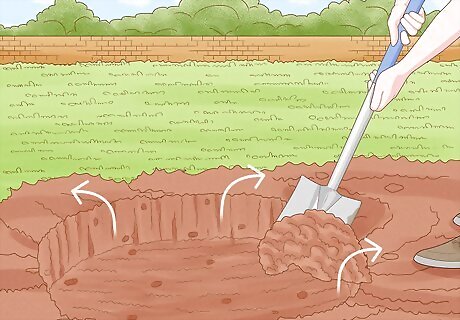
Prepare the hole at the new location before removing the shrub from its old location. This is important, as it will allow you to transfer the shrub as quickly as possible, which prevents the roots from getting stressed or dried out. In order to dig a new hole, it's important to get an idea of the size of the shrub's roots. This will ensure that the new hole is big enough. To do this, take a tape measure and find a point on the main trunk of the shrub that is 15 centimeter (5.9 in) above the ground. Measure the trunk diameter at this point. Multiply that by ten to get the size of the root diameter. Once you have the root diameter, you can dig a hole of the same diameter or larger.
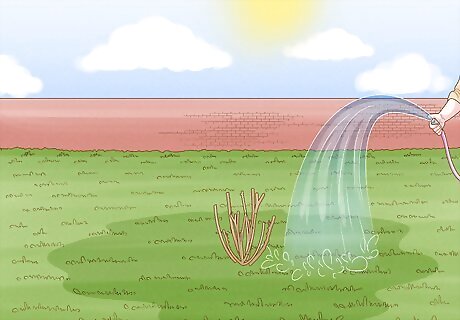
Water the shrub before relocating it. If your soil type is sandy, give the shrub a good watering two or three days before moving it. This will help preserve the root mass when you dig it up.

Dig up the root ball. Dig the root ball out with the back of your spade facing the plant. You can move it to its new location by placing it on an old sheet or tarpaulin which you can drag across the ground. If you don't have time to replant the shrub immediately, you will need to tie up the branches of the shrub to protect them. Start at the bottom and use a spiral wrapping movement to wrap the branches against the trunk. Make the roots as compact as possible but avoid damaging the branches by tying too tightly.
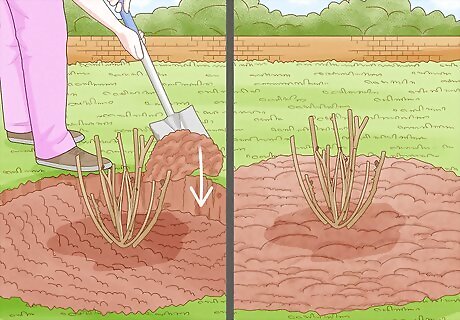
Replant the shrub. Lower the shrub's root ball into its new location and cover with soil. Don’t tamp the soil down with your feet as this can damage the roots. Water the shrub well until it's established in its new position.
















Comments
0 comment